Merge Cells in Excel is the quintessential formatting feature that elevates the aesthetics and organization of your spreadsheets. This versatile tool transcends the boundaries of data presentation, allowing you to create headers, titles, and custom layouts with precision and ease. With ‘Merge Cells in Excel,’ you’re not just formatting cells; you’re sculpting a visual masterpiece that enhances data readability and understanding. Embrace the simplicity and impact of this feature to transform your worksheets into polished documents that convey information effectively. Whether you’re designing tables, crafting forms, or simply optimizing the visual appeal of your data, ‘Merge Cells in Excel’ empowers you to merge functionality with aesthetics, ensuring that your Excel documents are a testament to professionalism and data clarity.
How to combine cells in excel?
The procedure for merging cells is as follows:
Step 1: If you want to combine two neighboring cells, you have to highlight them, outlined in Red below.

Step 2: Click the “Merge” icon and select “Merge Cells” under the “Home” tab, outlined in Red below.
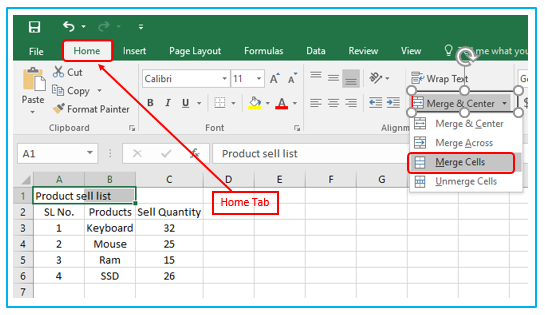
Step 3: All done! The cells were merged, outlined in Red below.
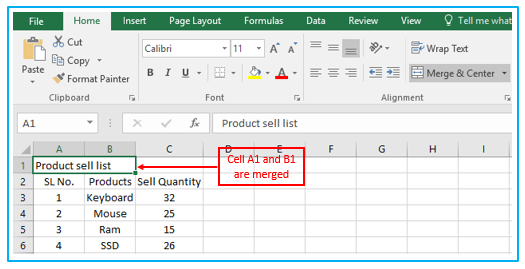
How to merge and center cells?
The procedure of merging cells is as follows:
Step 1: If you want to combine two neighboring cells, you have to highlight them, outlined in Red below.
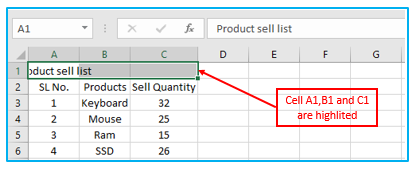
Step 2: Click the “Merge” icon and select “Merge & Center” under the “Home” tab, outlined in Red below.
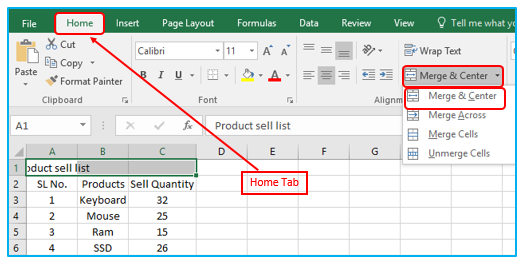
Step 3: The cells will be merged, with the data being centered inside each cell, outlined in Red below.
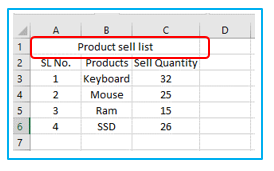
How to Merge Multiple Cells in Excel?
More than two cells can be merged. You can utilize the Merge Across, Merge Cells, or Merge & Center functions depending on the spreadsheet layout you want.
Merging cells:
Cells within a single row can be combined with this option. Cells within a column or across numerous rows cannot be combined using the “Merge Across” function.
Step 1: You should select all of the cells within the row that you want to combine, outlined in Red below.
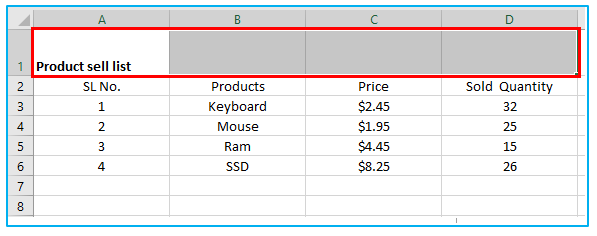
Step 2: Select “Merge Across” by clicking the “Merge” symbol under the “Home” tab, outlined in Red below.
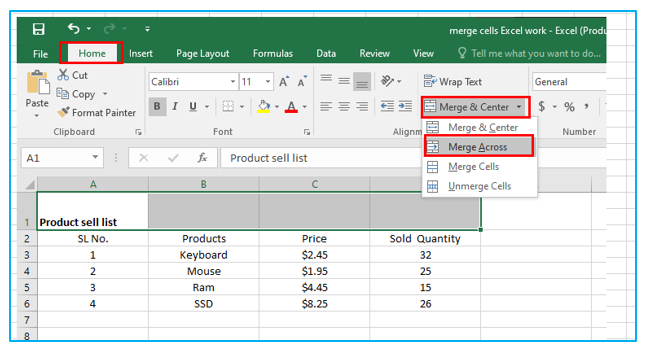
Step 3: Click on Merge across and you’re done with merging. Then it should look like this.
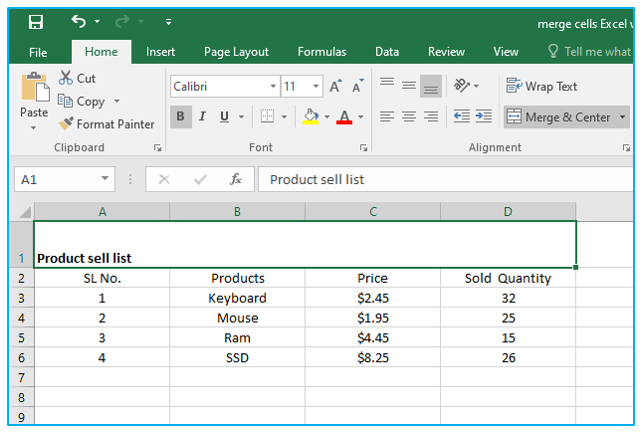
Merge and center:
Multiple cells can be merged and centered across rows and along columns. Just keep in mind that only the information in the upper-left cell will remain after merging.
Step 1: You should select all of the cells within the row that you want to merge and center, outlined in Red below.
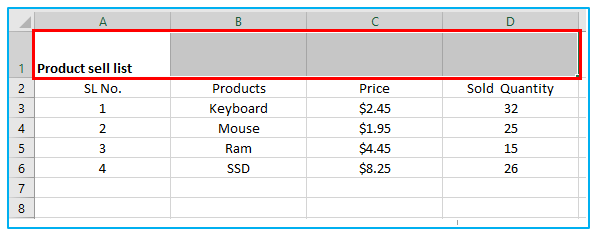
Step 2: Select “Merge & Center” by clicking the “Merge” symbol under the “Home” tab, outlined in Red below.
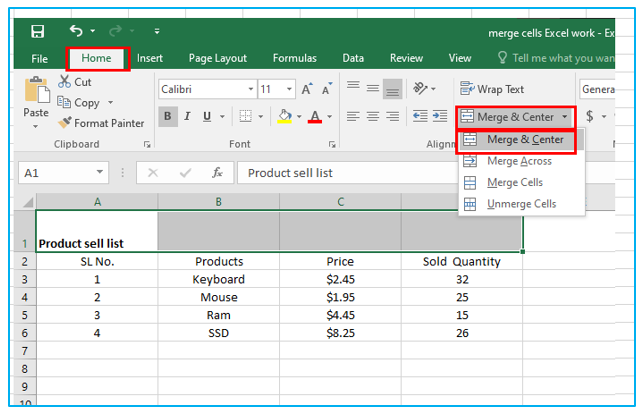
Step 3: Click on “Merge & Center” and you’re done with merging. Then it should look like this.
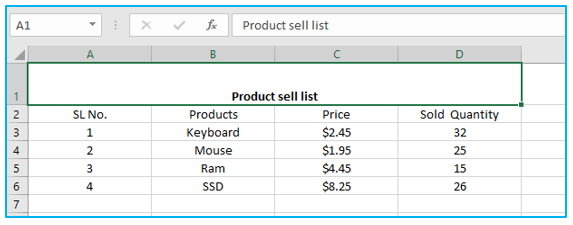
How to Merge Multiple Cells without losing data?
As mentioned above, the top-left cell’s content is the only thing that the default Excel merging features maintain. Additionally, even though Microsoft significantly enhanced Excel in recent editions, the Merge Cells functionality appears to have escaped their notice, and this crucial shortcoming is still there in Excel 2013 and Excel 2016. Well, there is a workaround when there isn’t a clear solution.
Justify feature:
This is a simple and quick way to merge cells while retaining all of their content. The cells that need to be merged must all be in the same column, though.
Step 1: The cells you want to combine select them all, are outlined in Red below.
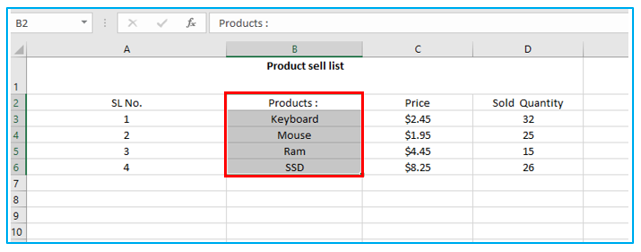
Step 2: Make the column big enough to accommodate the contents of all cells, outlined in Red below.
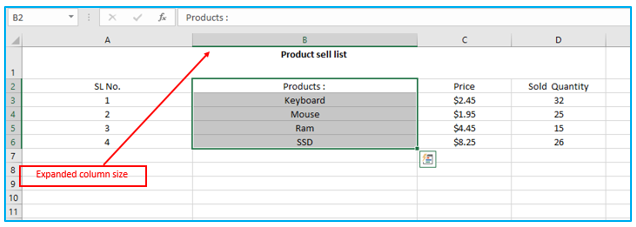
Step 3: Click Fill > Justify under the Editing group on the Home menu. The selected cells’ contents will be transferred to the top-most cell as a result,

After clicking Justify this should look like this.

Step 4: Depending on whether you want the merged text to be centered or not, click Merge and Center or Merge Cells from the Merge option under the Home tab. Both processes is outlined in Red and shown below.
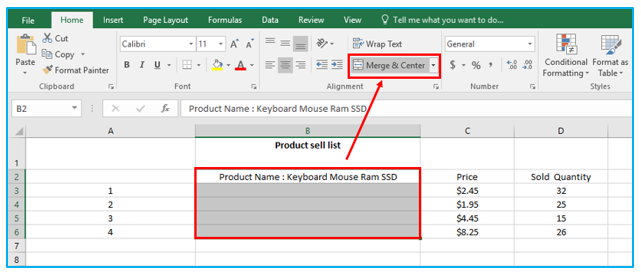
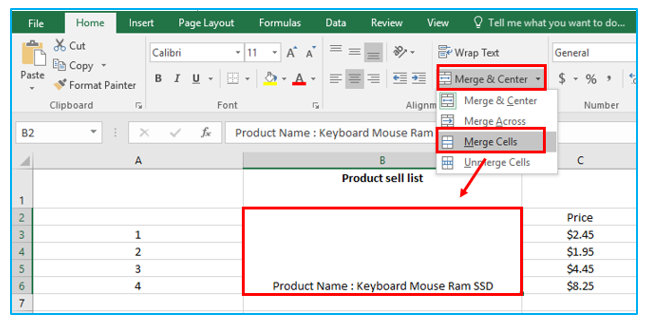
CONCAT or CONCATENATE function:
This method of combining cells in Excel may be preferable to those who are more familiar with Excel formulas. If necessary, you can use the & operator or the CONCATENATE function to connect the values of the cells before merging them.
Step 1: Select the cell where you want to merge all your cells, outlined in Red below.

Step 2: You can use the concatenation formula in its most basic form to merge the values of two cells into one. Use the formula to CONCATE or CONCATENATE, which is given below:
=CONCATENATE (first cell,” “, second cell), In our case we will selected B3 as our first cell and B4 as our second cell. You can add cells as per your preference. Output of this formula will be as given below:

Shortcut for merging cells in Excel?
The following Merge Cells shortcut might be helpful if you frequently merge cells in your Excel workbooks.
Step 1: Choose the cells that you want to combine or merged, outlined in Red below.

Step 2: Press and hold the Alt key, which gives you access to the Excel ribbon’s commands, until an overlay displays, outlined in Red below.
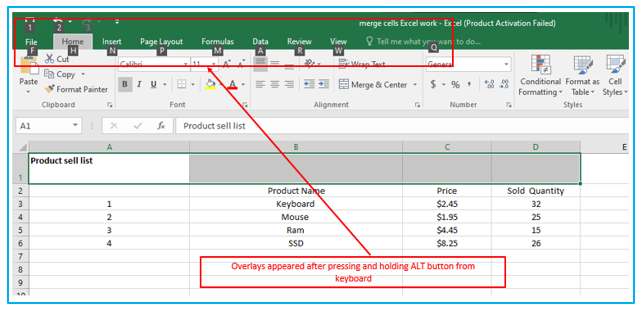
Step 3: To pick the Home tab, press H, outlined in Red below.
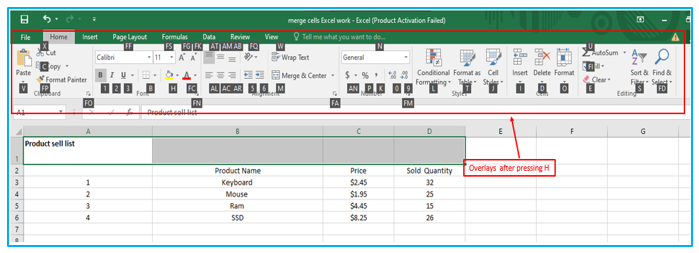
Step 4: Press M to switch to Merge & Center, outlined in Red below.
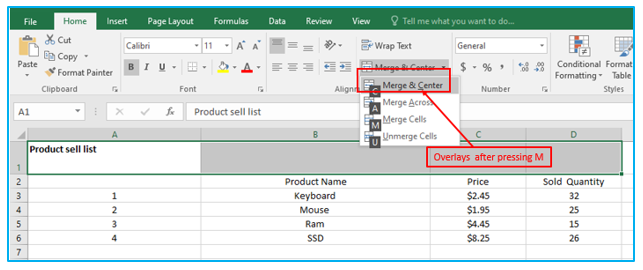
Step 5: Switch to a different Merge mode using these shortcuts:
Merge and center: Press C to merge and center the selected cells, outlined in Red below.
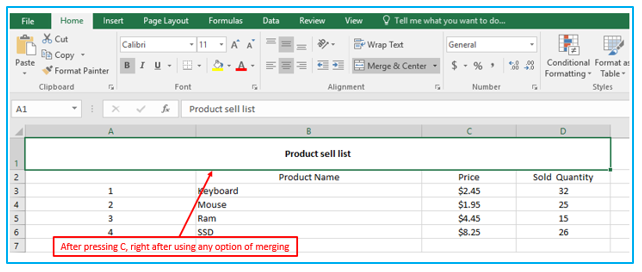
Merge across: A is used to merge across cells in each row, outlined in Red below.

Merge cells: M is used to merge cells without centering. Display output of merge across and merge cells are quite similar, outlined in Red below.

Unmerge cells: U is used to unmerge cells, which were merged before, outlined in Red below.
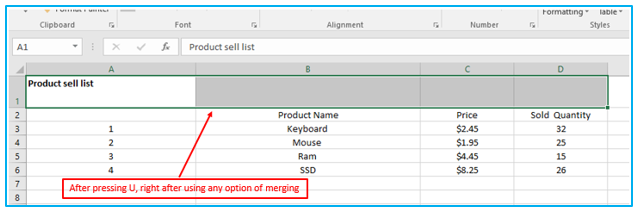
Why I can’t merge cells?
If your formula or formatting isn’t put up correctly, a lot can go wrong. Try this troubleshooting these suggestions if you’re having problems merging cells.
- Make sure the cell you wish to merge with is not being edited right now. If you are in the middle of editing something, the “Merge” icon will be shaded out. Simply press “Enter” to end editing or click on another cell before returning to the cell you want to combine to fix this.
- Verify if a particular cell is a component of an Excel table. Due to their particular format, tables cannot be combined. If the “Chart Design” or “Format” tabs across the top of your workbook are highlighted in green and the “Merge” icon is obscured, you are on a table.
- Look at the Excel workbook’s sharing permissions. You won’t be able to edit or merge cells if it is protected or not shared with you.
Application of Merge Cells in Excel
- Header Cells:
- Merge cells to create header rows or columns for better data organization and clarity in tables or spreadsheets.
- Title and Subtitle:
- Merge cells to create titles and subtitles for sections of your worksheet, enhancing document structure and readability.
- Centered Labels:
- Merge cells to center-align labels or headings within a cell, improving the visual presentation of your data.
- Form Layouts:
- Create custom form layouts by merging cells to create input fields, labels, and descriptions for data entry forms.
- Highlighting Data:
- Merge cells to highlight specific data points or summary values, making them stand out in your spreadsheet.
- Creating Visual Separators:
- Use merged cells to insert visual separators or divider lines between sections of your worksheet, improving overall layout and organization.
Merging cells in Excel can help you achieve a cleaner and more organized appearance for your spreadsheets, making it a valuable formatting tool for various purposes.
Visit for ready-to-use dashboards:
